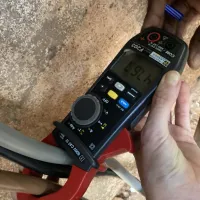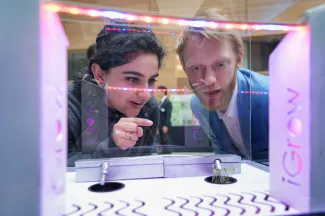"It’s important to recognize when it’s a good call to make riskier decisions and when it’s time to be safe."
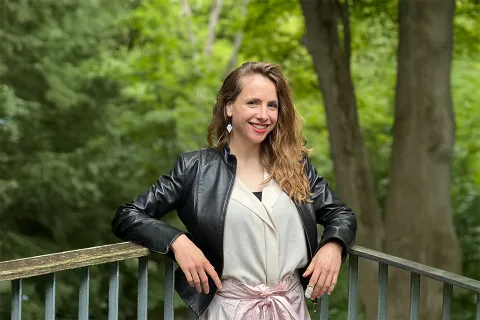
Vivienne Jaehn-Kreibaum
- Degree:
- Bachelor of Applied Science
- Grad year: 2020
- Program:
- Campus: Vancouver
Job: Electrical Engineer, BC Hydro
After graduating from UBC, Vivienne was Meta’s first college hire for the Oculus team, working as an electrical design engineer on Meta’s first set of augmented reality glasses. She then pursued a long-held dream to work for Médecins Sans Frontières, serving as critical facilities manager for a 60-bed trauma hospital in Bangui. Meet Vivienne Jaehn-Kreibaum – a multiskilled and inspiring trailblazer with a can-do attitude and passion for solving complex problems.
Any highlights from your time as an undergraduate?
Being on UBC Formula Electric was a formative experience. That’s where I designed my first circuit board which I felt really kickstarted my technical design skills. Another highlight was my exchange in Greenland through the Technical University of Denmark where I took classes particular to cold climate engineering, such as monitoring of the cryosphere and architectural considerations for the polar regions – some of the best six months of my life!
UBC Formula Electric Technical University of Denmark
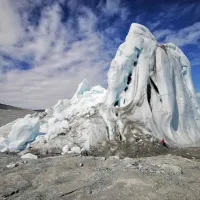
After you graduated, you were Meta’s first college hire for the Oculus. Tell us about your time at Meta.
To be honest, I was initially a bit unsure about accepting the position for various reasons – primarily being Facebook’s controversial reputation as a company, the need to relocate during the pandemic, and my primary goal at the time of working in clean tech. However, I am so glad that I pursued this opportunity. Beyond the professional skills gained at Meta, it led me to Seattle where I built the best friend group I’d ever had from scratch, allowed me to explore Washington’s incredible mountains and gave me a fortuitous financial runway.
As an electrical design engineer on the Augmented Reality Prototyping Team, I was responsible for the design, manufacture and testing of PCBAs that used FPGAs to aggregate high-speed MIPI cameras, sometimes up to 24 layers and running at 25 Gbps. Our job was to de-risk NTIs for the product teams and provide hardware for the research teams to gather experimental data. The product that I worked on, Orion, is Meta’s first set of augmented reality glasses that were announced last year.
It was an incredible three-and-a-half years at Meta: I had a fantastic manager, access to brilliant coworkers and mentors, and was spoiled with top-of-the-line equipment.
If anyone has a chance to work for Meta early in their career, I would wholeheartedly support it.
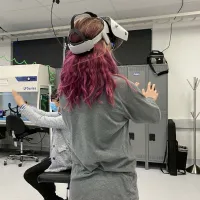
What were your responsibilities at the hospital?
The working day was theoretically 7:30 to 5:30, but as a logistics manager you are on call 24/7. I could be called in the middle of the night if the generators weren’t turning on or the pumps weren’t working, or even simple things like a pulse oximeter running out of battery.
My general responsibilities included maintaining the on-site generators, solar panels and all technical and biomedical equipment in the hospital; overseeing construction projects; and liaising with external contractors for projects beyond the scope of our team.
When in the field, you also must take on things outside your scope because more often than not there is no one else around to do it.
For example, after noticing some unusual electric shocks coming from my computer, I zeroed in on a serious and life-threatening ground fault in our building. It turned out that a full electrical audit had never been done! These are the types of things you take for granted when working in North America.
Working for MSF was definitely one of the hardest things I’ve done. When I arrived, my body was in some type of physiological shock for weeks. I couldn’t decide what was worse: the 40-degree heat and 95% humidity or working nonstop in a language I barely spoke (French).
It was also my first time in 10 years not being an engineer but being a manager and there were so many unspoken rules about the work culture within MSF that were challenging to navigate.
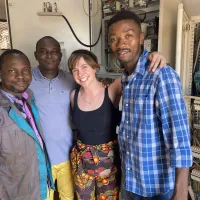
Any advice for new grads?
It’s important to recognize when it’s a good call to make riskier decisions and when it’s time to be safe.
You need to take care of yourself first. If you can gain experience working at a reputable company and pay off your student loans and then build up a nest egg, go for it. If you’re interested in working for a non-profit down the road, it will make a difference if you have worked at a profitable and high-performing company first. Specifically, it will show you how things are done well and will develop your professional network. Studying and working internationally also makes you appreciate even more what we have here in Canada and generally makes you more well-rounded and curious, in my opinion. All these different experiences will help you figure out exactly what you love to do.

